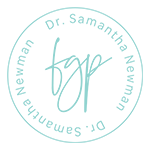How I Got Interested in Osteoporosis (And Why You Should Too)
It wasn’t one specific lecture or a lightbulb moment. It started, like a lot of things in medicine, with patients.
I had met many women who had osteoporosis — often after a fracture or a random scan. But what really caught my attention were the women who *shouldn’t* have had it. Women in their 40s or early 50s, being told they had menopause… but something didn’t add up. Their hormone levels weren’t quite right, or their symptoms were more severe than expected. When I dug deeper, many of these women were actually experiencing **Premature Ovarian Insufficiency (POI)** — and their bones were already being affected.
That’s when it clicked: I wasn’t just interested in treating osteoporosis — I wanted to *prevent* it. I learned that diet, movement, and hormone health all have a role. And when I went back to the guidelines, I realised there were basic blood tests and assessments being missed — like FSH levels, vitamin D, calcium, and even asking about cycle history.
Osteoporosis is a condition where the bones become thin, weak, and more likely to break. It often develops silently, with no symptoms — until there’s a fracture.
It’s incredibly common: around **one in three women** over 50 will experience an osteoporotic fracture in their lifetime. And yet, it’s underdiagnosed and under-discussed — especially in younger women, or those with hormone-related causes.
And here’s the part we don’t talk about enough — **the morbidity and mortality**. A hip fracture isn’t just a broken bone. It can mean surgery, loss of independence, or never getting back to baseline. In fact, up to **20–25% of people** over 65 will die within a year of a hip fracture.
That’s why this matters. Because every time we pick up on someone at risk, or make a decision that helps protect bone health — we’re not just avoiding a break. We’re preserving function, quality of life, and independence.
---
Would you like to add a call-to-action or a link to a resource like your lab guide or course?
How I Got Interested in Osteoporosis (And Why You Should Too)
It wasn’t one specific lecture or a lightbulb moment. It started, like a lot of things in medicine, with patients.
I had met many women who had osteoporosis — often after a fracture or a random scan. But what really caught my attention were the women who *shouldn’t* have had it. Women in their 40s or early 50s, being told they had menopause… but something didn’t add up. Their hormone levels weren’t quite right, or their symptoms were more severe than expected. When I dug deeper, many of these women were actually experiencing **Premature Ovarian Insufficiency (POI)** — and their bones were already being affected.
That’s when it clicked: I wasn’t just interested in treating osteoporosis — I wanted to *prevent* it. I learned that diet, movement, and hormone health all have a role. And when I went back to the guidelines, I realised there were basic blood tests and assessments being missed — like FSH levels, vitamin D, calcium, and even asking about cycle history.
Osteoporosis is a condition where the bones become thin, weak, and more likely to break. It often develops silently, with no symptoms — until there’s a fracture.
It’s incredibly common: around **one in three women** over 50 will experience an osteoporotic fracture in their lifetime. And yet, it’s underdiagnosed and under-discussed — especially in younger women, or those with hormone-related causes.
And here’s the part we don’t talk about enough — **the morbidity and mortality**. A hip fracture isn’t just a broken bone. It can mean surgery, loss of independence, or never getting back to baseline. In fact, up to **20–25% of people** over 65 will die within a year of a hip fracture.
That’s why this matters. Because every time we pick up on someone at risk, or make a decision that helps protect bone health — we’re not just avoiding a break. We’re preserving function, quality of life, and independence.
---
Would you like to add a call-to-action or a link to a resource like your lab guide or course?

